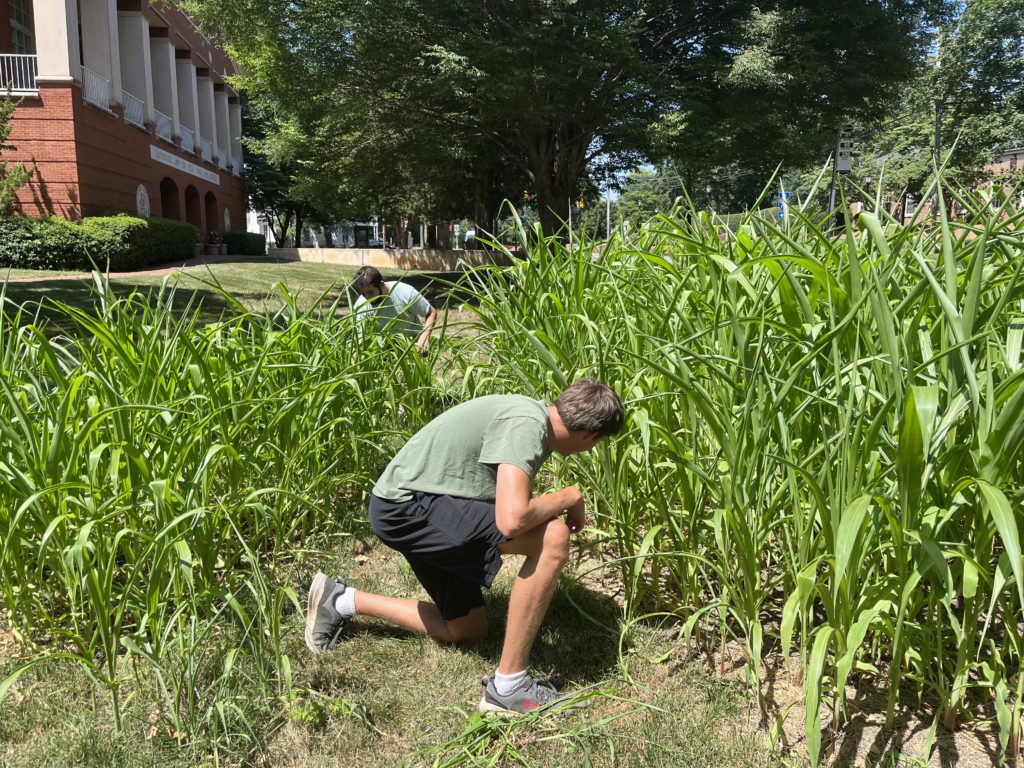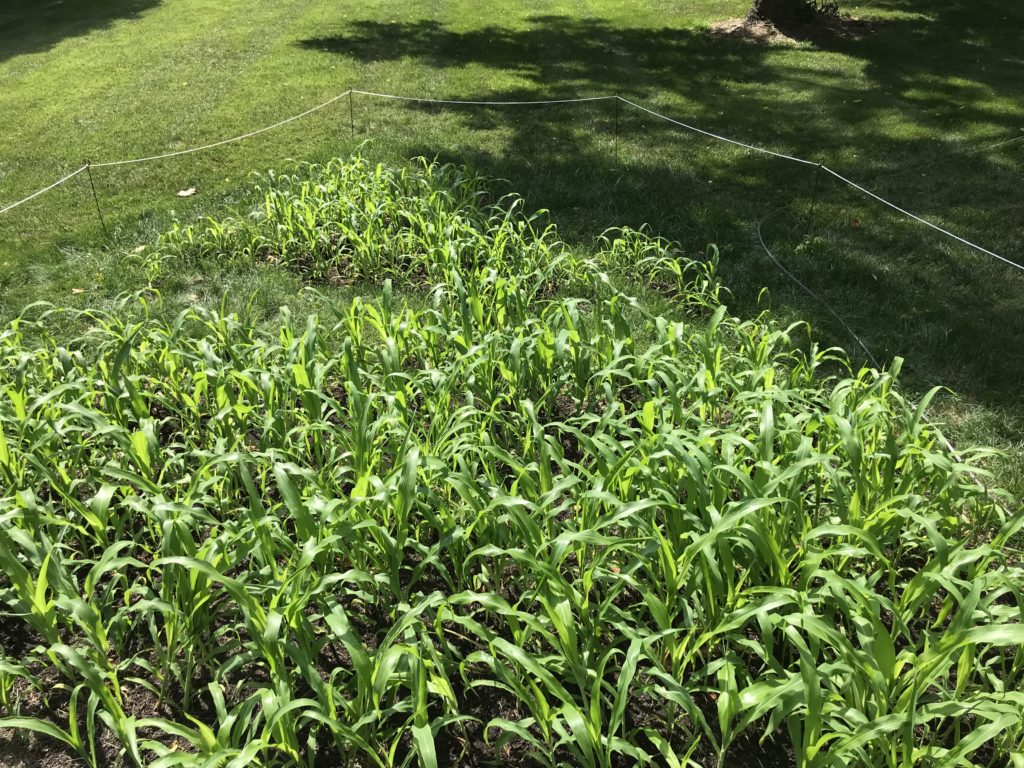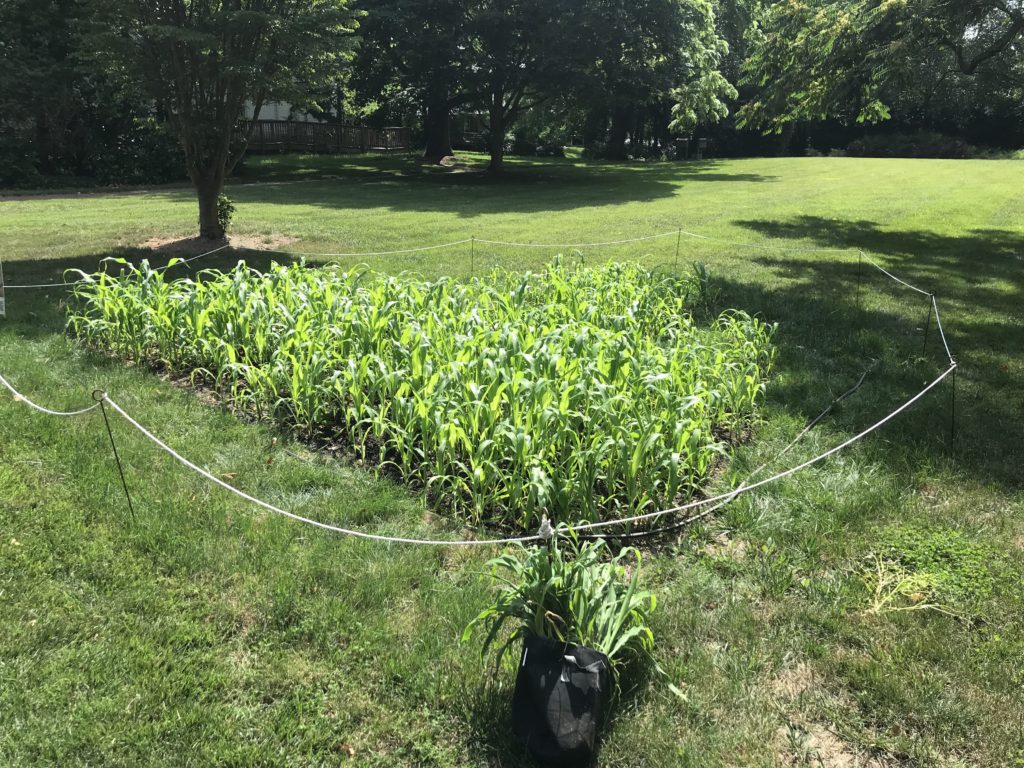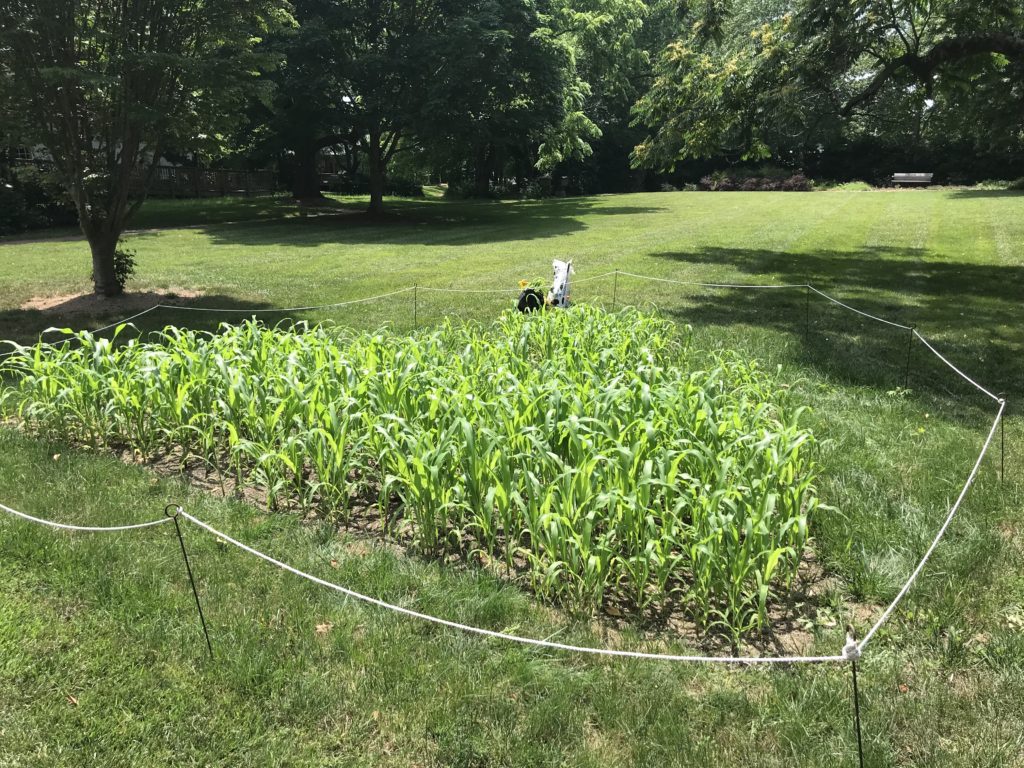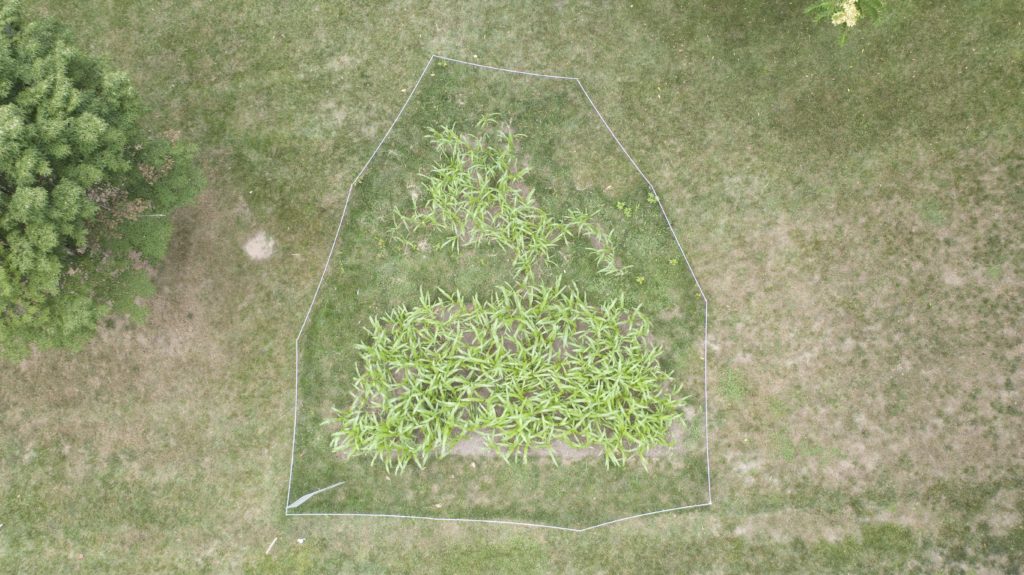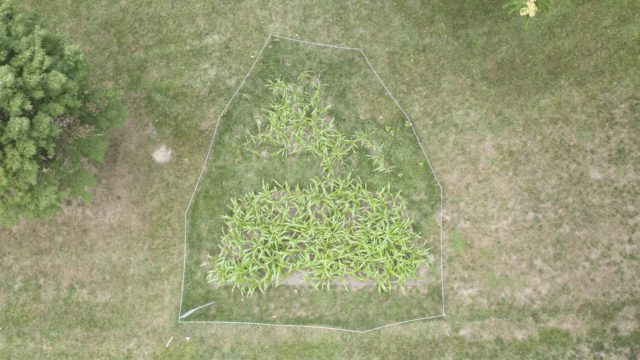From my limited experience with painting, I have often used water for cleaning my brushes and occasionally thinned my paint. However, when it comes to Nicholas Galanin’s work, Unshadowed Land, those two common art terms have vastly different meanings. Rather than experimenting with new aesthetics or creating contrasting layers within a work, the thinning recently done to the corn grown in the outline of Andrew Jackson involved selectively removing plants from the soil. Despite the glaring differences in action, the function of thinning plants relates to thinning paint in one beautifully efficient way: creating more with less.
On a gorgeous April afternoon, representatives from the College, Catawba Nation, and many places in between gathered outside the VAC to complete the next phase of Unshadowed Land. The communal planting of the colorful Catawba corn seeds that followed created a meaningful and symbolic moment, but a very densely populated garden bed. Typically, planting more seeds than desired is beneficial because only a certain proportion will germinate. However, in a remarkable display of evolutionary vitality, Catawba Corn seems to germinate with an almost 100% success rate as evidenced by data from the greenhouse and anecdotal evidence from the farm and VAC. This success is a testament to the sustainability of this locally adapted variety of corn.
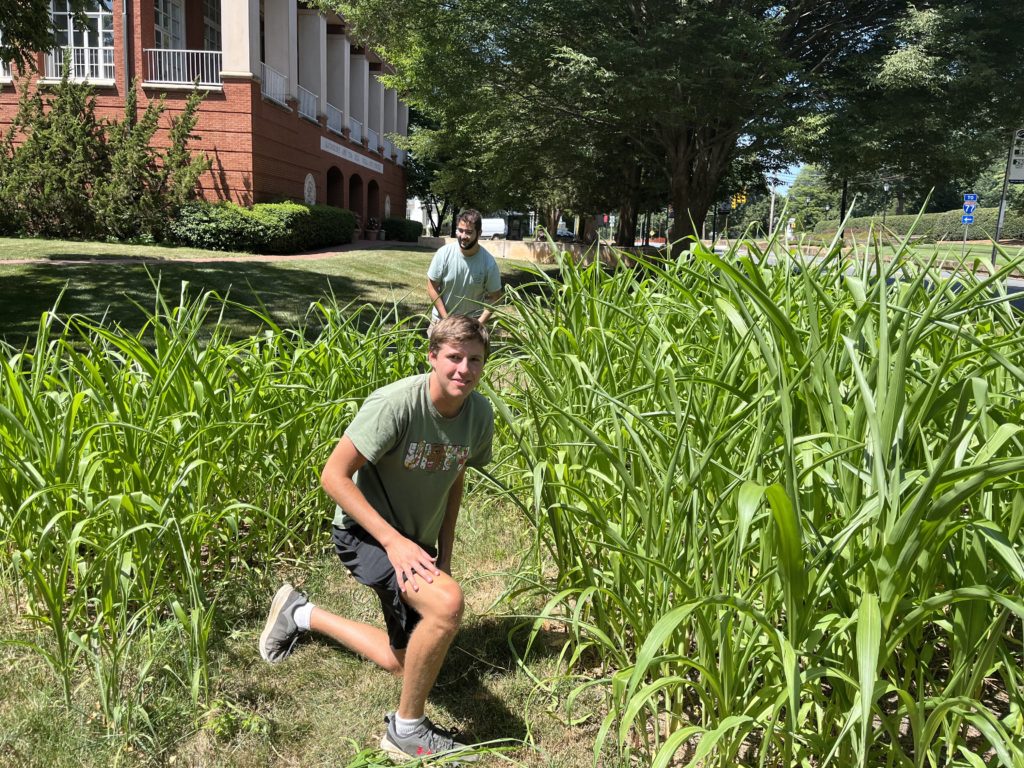
However, the characteristics of this corn that has allowed it to thrive in the piedmont for the past 6,000 years may no longer be suitable. Climate change is expected to cause prolonged drought followed by periods of intense rain and extreme temperatures which may have adverse impacts on the corn. To be better prepared to face a changing climate while reintroducing Catawba corn, Dr. Susana Wadgymar is leading a drought tolerance experiment in the college greenhouse. The results of this experiment will allow the Catawba Nation to assess the natural limits of this corn that typically does not require irrigation to grow.
Now a month after the seeds have germinated, the time has come to thin. While still denser than ideal (but accounted for with nutritionally concentrated soil and supplemental water), the remaining corn should have the space and nutrients required to reach towards the sky. While another thinning may be required for the plants to reach their expected 10 foot height and produce the multi-colored corn, the now 2ft tall plants should have room to grow. Thinning corn is a perfect example of understanding the limitations of the working relationship between the earth and the corn, or in other words, creating more with less.
-Ty Cryan ’24
